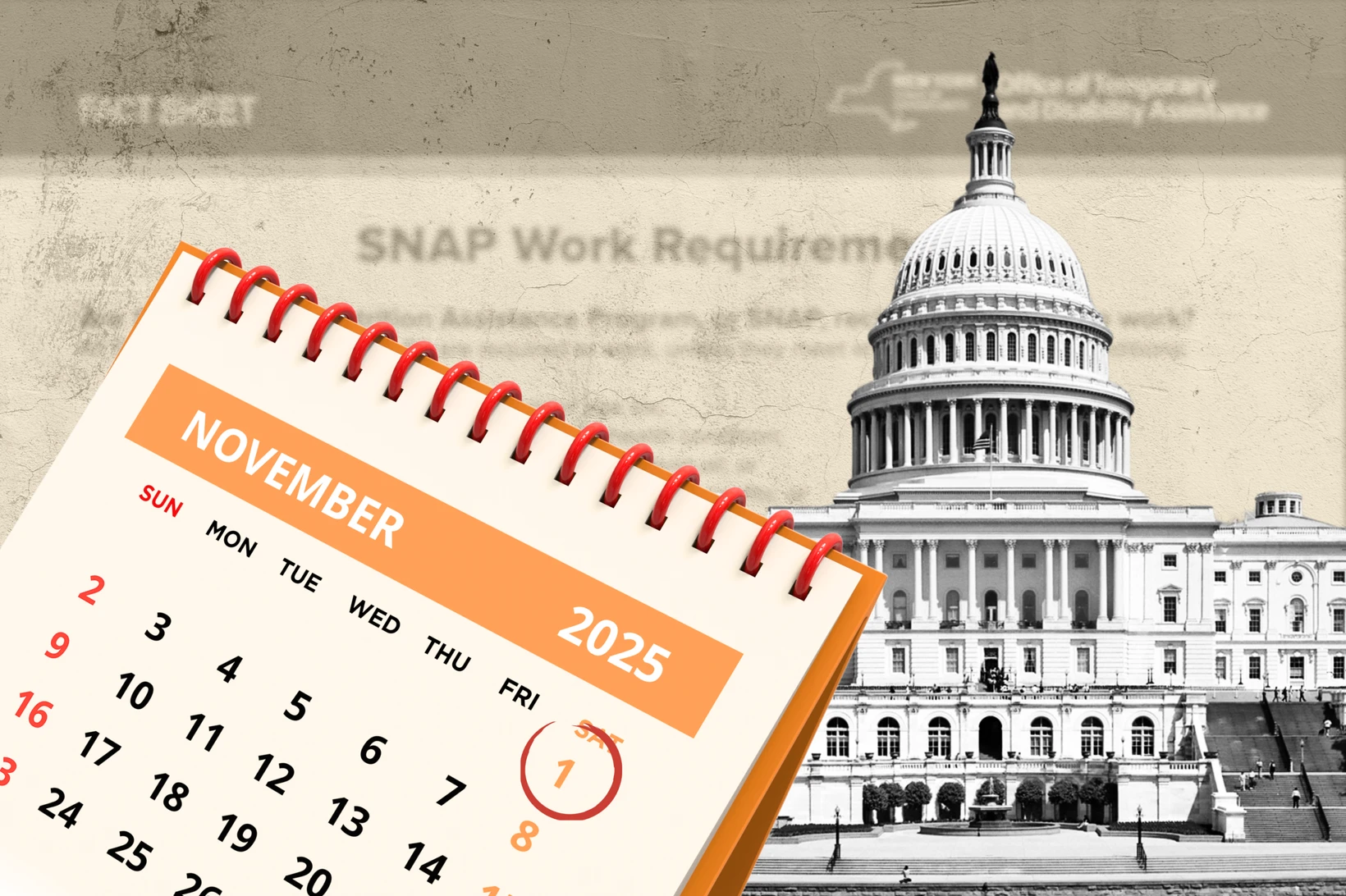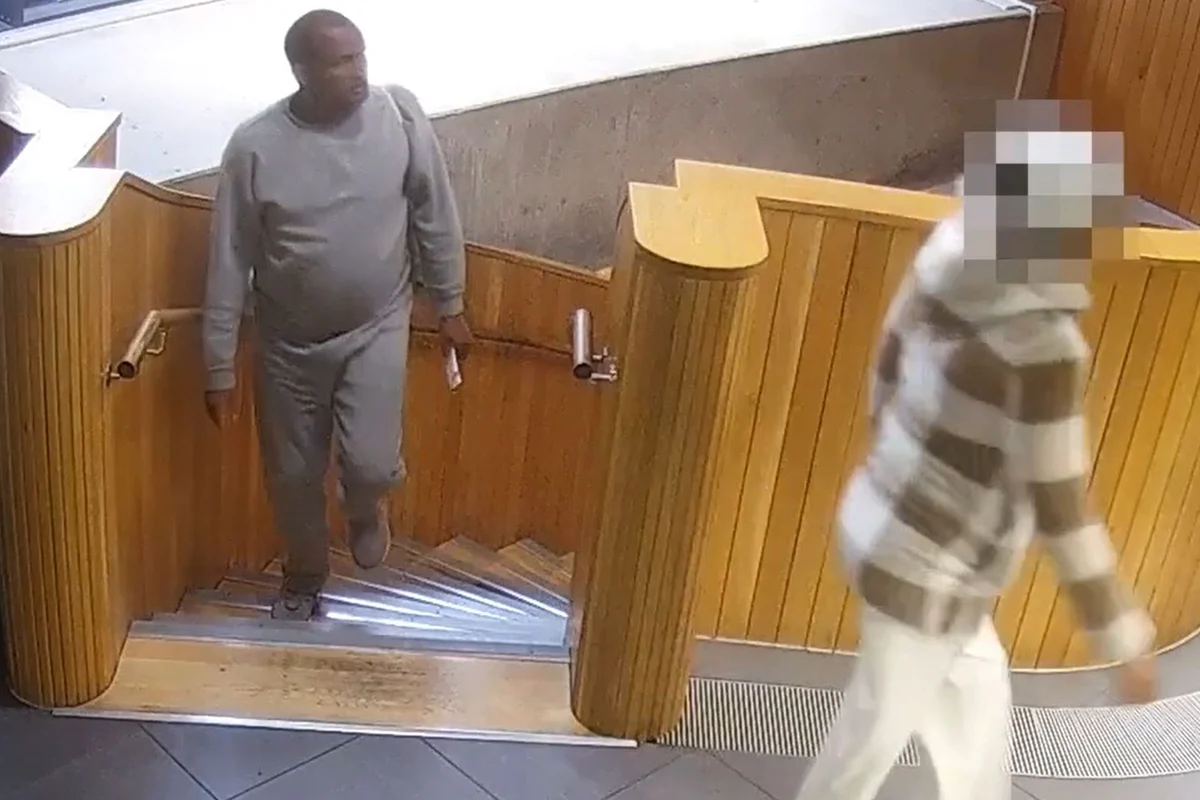Copyright citylimits

The federal government shutdown and new work requirements will throw New York’s food stamps program into chaos, New York Focus reports. Sign up for their newsletter here If you’re one of the nearly 3 million New Yorkers currently enrolled in the Supplemental Nutrition Assistance Program, you are likely to see delays in your food benefits next month as a result of the ongoing federal government shutdown. You may also be subject to new work requirements, which could cause hundreds of thousands of New Yorkers to lose their benefits. That could trigger a hunger crisis. The average enrolled New York household receives $376 per month from the program, which is also a significant source of revenue for the state’s retailers and farmers. Gov. Kathy Hochul is facing calls to fund food benefits during the shutdown, but she has so far said the state can’t afford to. Here’s what you need to know. Will I receive my November SNAP benefits? It’s likely that you will see a delay or not receive your benefits next month due to the government shutdown. The federal government has been shut down since Oct. 1 over disagreements in Washington, D.C., over skyrocketing health insurance premiums. Until Congress strikes a deal, funding is frozen for programs like SNAP and food shipments for food banks. It’s not yet clear whether the Trump administration will later reimburse recipients for SNAP benefits they don’t receive in November. Where can I get help with groceries? For the latest snap developments, check this state website. The latest announcements for WIC can be found here. To locate your nearest food pantry or food bank, use this website. Local mutual aid groups in New York City and elsewhere in the state may also be offering assistance. West Side Campaign Against Hunger in New York City is among several local organizations that will be providing more food to their clients in anticipation of snap disruptions. It has also expanded its delivery program in light of increased fears over immigration raids. Local politicians’ offices may also be able to connect residents with local feeding resources and programs. You can look up your elected officials using this website. (Silverman also urged the public to contact their representatives and demand action.) Food providers are aware that their efforts won’t be enough. “The value of SNAP is exponentially bigger than all the emergency feeding work that happens in NYC combined,” Silverman said. “Food pantries are not a substitute for SNAP. They never have been and they can’t be.” Amie Parikh, chief executive officer for the Hudson Valley Care Coalition, agreed that there is no substitute for SNAP, but urged New Yorkers to tap into other existing programs they may not be aware of. As part of an ongoing state initiative, the Hudson Valley Social Care Network is currently screening Medicaid recipients in the region to connect them with free food and assistance with energy bills. Many Medicaid recipients are enrolled in SNAP but may not be aware they qualify for this separate stream of nutritional assistance, which is funded through Medicaid, Parikh said. The program covers free, delivered medically tailored meals, cooking supplies and pantry items for certain Medicaid recipients. What is New York doing in response? New York is among 25 states suing the Trump administration for failing to use emergency contingency funds to keep SNAP running during the shutdown. (The administration had previously said it would keep SNAP benefits flowing during a shutdown, but has not done so.) Hochul declared a state of emergency Thursday and committed over $106 million to support various food programs across the state that are expected to see increased demand while SNAP benefits are paused. The money includes a mix of new funding and fast-tracked grants that were already allocated to food providers for the upcoming calendar year. Hochul plans to deploy student volunteers to help distribute food aid and has called on businesses to donate what they can. “This is a moment for our community to rise up and respond to something that can only be described as a moral crisis,” she said at a press conference Thursday. Greg Silverman, who heads the West Side Campaign Against Hunger in New York City, urged city and state leaders to devise a more robust emergency plan to get aid directly to New Yorkers and support frontline food providers. “They need to come together and come up with a solution that is cash-based,” he said. “We need our elected officials to step up and not just show up to some Thanksgiving turkey giveaway.” Hundreds of organizations are calling on state leaders to fully cover the funding loss—roughly $650 million in lost snap benefits per month—using New York’s sizable surplus or fiscal reserves. The Fiscal Policy Institute, a left-leaning think tank, points out the state could try to secure a deal with Congress to have these funds reimbursed by the federal government later. “This is exactly what reserves should be used for,” said FPI economist Emily Eisner. “This will not put New York state in financial distress to cover the benefits.” She called on state lawmakers to convene in Albany immediately for an emergency session. Other states have already stepped up. Virginia and Delaware have committed to covering SNAP benefits for their residents after declaring states of emergency. New Mexico will do the same for at least 10 days. California is pouring $80 million into its food bank network and has enlisted the help of the National Guard to keep facilities running, as it did during the pandemic. What about the SNAP work requirements I’ve been hearing about? Starting Nov. 1, some SNAP recipients will also be subject to new work requirements signed into law by President Donald Trump earlier this year. The announcement came as a surprise to states like New York, which originally had until next year to begin implementing the new requirements. Counties are now scrambling to communicate these changes to snap recipients, and it’s possible you may encounter some delays and confusion as agency staff adjust to the new guidelines. Will I be subject to the work requirements? The new rules may apply to you if you meet the following conditions: Are an adult aged 18 to 64 Do not live with dependents or children under age 14 You aren’t disabled You aren’t pregnant The new mandate will also apply to veterans, the homeless, and aging foster youth who have been historically exempt from work requirements. Your county social service department should contact you soon if they determine you are subject to the new work rule requirements. Mailed notices for those living in New York City have begun going out and will outline the next steps you need to take. Other counties like Oswego and Erie are scheduling in-person orientations to notify residents of the changes, while those residing in Onondaga County may also receive automated calls in addition to formal notices. To maintain SNAP benefits under the new work requirements, you’ll have to prove that you spent 80 hours each month working, in school or volunteering. (The monthly time requirement may be lower, based on the amount of SNAP benefits your household receives.) If you’re unable to comply with these requirements for more than three months, your SNAP benefits will be terminated. How can I keep my SNAP benefits under the new work requirements? While the new work rules go into effect on Nov. 1, the first month that will count toward the three-month limit starts on Dec. 1. This means that your SNAP benefits cannot be canceled due to the new three-month time limit before March 1, 2026. The state has instructed county social service departments to connect SNAP recipients with local programs that could help them meet the 80-hour monthly requirements, which could take the form of various workforce training programs or volunteer activities. New York is one of the few states that delegates SNAP administration to counties, so offerings may differ based on your county. Scott French, who heads New York City’s Human Resources Administration, said his agency is doing all it can to ensure New Yorkers across the five boroughs are able to comply with the new requirements. “That’s our leading goal and mission in everything we’re setting up here, to make sure folks have every possibility to keep their benefits.” The agency is in the process of scheduling appointments throughout November for New York City residents who are subject to the new work rules. The appointments will connect SNAP recipients with pre-approved workforce development programs that will help them satisfy the monthly requirement. The agency will also begin processing medical exemption forms for New Yorkers who are not able to meet the monthly requirements; the forms can be filled out by a wide variety of health providers. The new form will allow health providers to provide broad, non-specific reasons for why patients may be unable to meet the new SNAP work rules, such as temporary or permanent physical or mental health barriers. (It does not require a specific diagnosis, unlike disability benefits.) If you’re a New York City resident without access to health care providers, the Human Resources Administration will connect you with professionals who can assess you for medical exemptions, French said. Does my immigration status affect my eligibility for SNAP? The new law passed in July restricts SNAP eligibility to “legally present” immigrants. This means that refugees and asylum-seekers may no longer be eligible for SNAP benefits. This includes New Yorkers who are trafficking victims and those with temporary protected status. Legal permanent residents, such as green card holders, remain eligible for SNAP, but may be subject to a five-year waiting period before they can receive benefits. An estimated 41,000 New Yorkers could lose their SNAP benefits as a result of eligibility changes based on immigration status. How will the shutdown affect my other benefits? It’s not yet clear how the shutdown will affect the Women, Infants, Children program, or WIC, which provides nutritional assistance for nearly half a million pregnant women, new mothers, and their babies in New York. Earlier this month, the White House used emergency funds to keep the program funded through the end of October—which advocates point out the administration could easily do for the SNAP program, too. An additional $300 million is needed to keep WIC running for the first half of November, but it’s unclear if the administration will do so again. If you rely on the Low Income Home Energy Assistance Program, or HEAP, to heat your home, you could see those benefits delayed or missing due to the shutdown. HEAP has been in limbo since earlier this year, when all federal staff for the program were let go. Many New Yorkers are enrolled in both SNAP and HEAP. Medicaid and Medicare benefits will continue during the shutdown, though reduced federal staffing may make it harder to get help with tasks like eligibility verification. Can I still apply for benefits? Yes. All county agencies across the state are still processing applications, including renewals, for SNAP, WIC, and HEAP. Officials and advocates are urging New Yorkers to stay up to date on their renewals for these programs, despite the pause in payouts, to ensure they receive their benefits once the federal government reopens.



